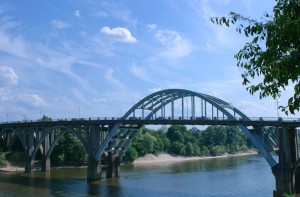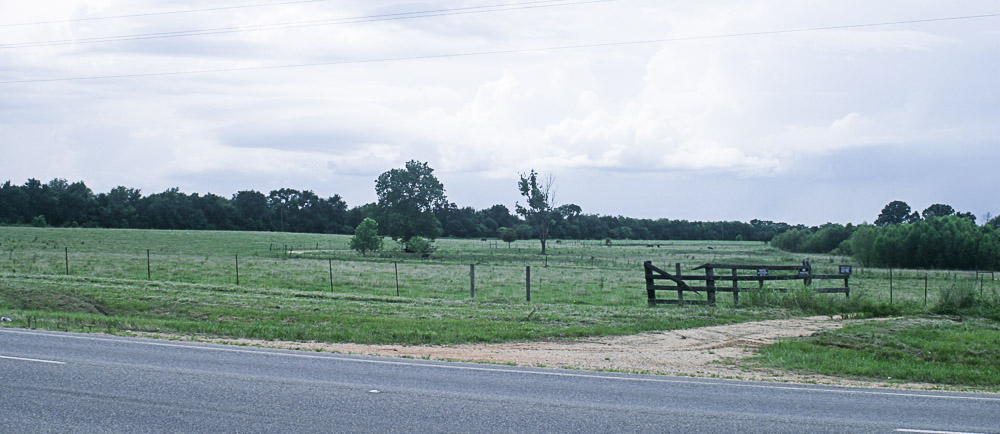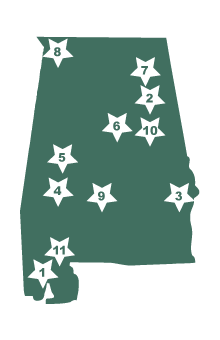From beginning to end, the Selma to Montgomery March Byway is filled with civil rights history. Home to one of the most significant events in the American struggle for equality, this 54-mile stretch of highway marks the journey that led to equal voting rights for American citizens, regardless of race.
Although the march officially began in March of 1965, on January 2, 1965, Dr. Martin Luther King, Jr. and the Southern Christian Leadership Conference joined the Student Nonviolent Coordinating Committee in the town of Selma, AL to oppose extreme voting restrictions imposed on colored citizens of the area. Despite repeated efforts by local blacks, registration attempts had been consistently denied access to all but two percent of the African-American population. Would-be voters often faced closed doors due to phony “rules,” such as a limit on the number of applicants, or facilities that closed suddenly and without explanation.
Protestors congregated in Selma, where they hoped the notorious brutality of local law enforcement would draw the attention of President Lyndon B. Johnson and earn new voting rights legislation.
Despite mass arrests, the campaign continued without violence until February 18. On that day, officers trying to break up an evening march shot and killed Jimmie Lee Jackson, who was defending his mother from a trooper’s nightstick.
Following Jackson’s death, 600 civil rights marchers set out on March 7, 1965 to petition the state capitol in Montgomery. After just six blocks, state and local lawmen met them with teargas and billy clubs, driving them back to Selma’s Brown Chapel Church. The event became known as “Bloody Sunday,” and incited outrage throughout the nation.
John Lewis, who has served in the U.S. House of Representatives since his election in 1986, led the march and suffered a severe beating to the head. He later told reporters, “I don’t see how President Johnson can send troops to Vietnam — I don’t see how he can send troops to the Congo — I don’t see how he can send troops to Africa and can’t send troops to Selma.”
The second march began on March 9, this time led by Martin Luther King, Jr. Although President Johnson had warned King not to march until he could issue a court order to protect the marchers, King called on religious leaders across the country to help in his cause. That afternoon, he led a crowd of over 2,000 people from the town of Selma. Rather than continue on to Montgomery, however, King stopped the march at the Edmund Pettus Bridge, the site of the previous attack, and asked his followers to kneel and pray.
Even though the second march never reached Montgomery, King’s act of restraint did gain him support from President Johnson, who urged Americans to stand up against the acts of brutality committed against the people of Selma and promised to introduce a voting rights bill to Congress. With the words “We shall overcome,” Johnson expressed his desire to eliminate the plagues of bigotry and injustice.
The final, federally sanctioned march departed from Selma on March 21, 1965 with the protection of hundreds of federal agents and Alabama National Guardsmen. Demonstrators marched between 7 and 17 miles per day, camping by night in fields owned by supporters and being entertained by celebrities such as Harry Belafonte and Lena Horne. On the final day the number of marchers rose from 300 to 25,000 as the assembled crowd finally approached the steps of the Montgomery Capitol, where King delivered a stirring speech, proclaiming, “The end we seek is a society at peace with itself, a society that can live with its conscience. And that will be a day not of the white man, not of the black man. That will be the day of man as man.”
Although at least two people were killed in response to King’s remarks, on August 6, President Johnson signed the Voting Rights Act of 1965, calling the right to vote “the most powerful instrument ever devised by man for breaking down injustice and destroying the terrible walls which imprison men because they are different from other men.” Dr. Martin Luther King, Jr. was assassinated three years later on April 4, 1968. Followers across the nation continue to honor his legacy annually on that historic day.
Today, the towns of Selma and Montgomery remain as symbols of the exciting and inspiring history behind the civil rights movement. Visit the National Voting Rights Museum and Institute in Selma and peruse themed rooms, which highlight different aspects of the struggle for equality. Appreciate the silent feeling of dignity surrounding Brown Chapel, the headquarters of the Voting Rights Movement. In Montgomery, walk up the steps of the Capitol where Dr. Martin Luther King, Jr. gave his historic speech or ponder lives forever changed as you wander past the Civil Rights Memorial or add your name to the Wall of Tolerance in the Civil Rights Memorial Center on Washington Avenue.
Although the fight for change and equality continues today, the legacy and ideals represented through the sacrifice of the pioneers of the Civil Rights Movement stand as a beacon to those who have followed, giving hope for an even brighter future.
As the Selma to Montgomery March Byway winds its way from the streets of Selma, Alabama, through the gentle rolling hills of Lowndes County, and into the state’s capital city of Montgomery, you will find yourself transfixed in history. Also designated as a National Historic Trail, this section of U.S. Highway has known many facets of history in its years of existence. However, it wasn’t until Dr. Martin Luther King, Jr., started leading voting rights demonstrations in Selma early in 1965, culminating with the historic Selma to Montgomery March, that the route became internationally known.
The first Selma march began on March 7, 1965, and came to an abrupt halt at the Edmund Pettus Bridge when scores of local police officers and Alabama state troopers attacked a band of 500 marchers with billy clubs and tear gas. Many marchers were left bloodied and severely injured. On March 9, 1965, Dr. King led a ceremonial march to Edmund Pettus Bridge and held a short prayer session there. After the first failed attempt, three weeks earlier, Dr. King marshaled forces that made their way 54 miles, on March 21, 1965, from the Edmund Pettus Bridge to Montgomery, paving the way towards one of the most important pieces of social legislation of the 20th century: equal voting rights for all American citizens.
You can relive the Selma to Montgomery March in its entirety. Visit the First Baptist Church and Brown Chapel — the churches that housed much of the civil rights movement effort in Dallas County. See the jail where civil rights activists were imprisoned for their protests. Cross the Edmund Pettus Bridge where marchers faced physical opposition. Finally, at the end of the march in Montgomery, walk on the steps of the capitol, where King delivered his “How Long, Not Long” speech to a crowd of nearly 30,000 people. The reminiscent journey is sure to be a stirring one, especially because the actual march took place only a few decades ago.
For an overview of the struggle for equal voting rights, visit the National Voting Rights Museum and Institute in Selma. The museum is filled with first-hand accounts and testimonials of the march. These marches were moments in time that helped bring access to the ballot box to many African Americans in Southern states.
For a tangible experience of the past, head to Selma today. To gain an appreciation for what people have done to ensure liberty and justice, visit the Selma to Montgomery March Byway.




